I love dividend growth stocks. I love reading about dividend growth investing.
So I decided to combine the two by reaching out to some of my favorite dividend growth bloggers and asking them about their favorite dividend growth stocks. And be sure to stick around because at the end I will discuss both my current and my all-time favorites!
Hopefully you will enjoy the answers as much as I did!
What is Your Favorite Dividend Growth Stock (currently or all-time) and why?
The Conservative Income Investor – “I think there are five realistic candidates you can choose from–Coca-Cola, Johnson & Johnson, Procter & Gamble, Nestle, or Colgate-Palmolive. From there, it’s more a debate about style than substance. My guess is that everyone reading this will be six feet under while these companies are still pumping out profits on six different continents. If I could only own one of them for the rest of my life, I’d choose Coca-Cola. The diversification of 500 brands is huge, the distribution network that is unparalleled, and a brand name that actually means something significant is the kind of asset you want to spend your life acquiring. They spend a couple cents coloring water, and are able to sell it for a dollar. That’s a heck of a business model. It’s probably the safest way to get 8-11% annual returns over the coming fifteen to twenty years.”

Dividend Growth Investor – “The dividend stock I like best is Philip Morris International (PM), which sells tobacco products outside of the US. I like several things about the company, such as its current valuation, strong cash flow and the prospects for future growth, all of which could result in massive compounding of wealth. The stock is cheap at 15 times earnings and yields 4.70%. The company expects to grow earnings and dividends in the high single digits or low double digits in the foreseeable future, fueled by acquisitions and organic growth. Phillip Morris International has a high exposure to emerging markets, where number of smokers and their income is increasing. The company also sells popular brands of cigarettes, which have a loyal customer base that buy even if prices increase. Plus, PM generates a lot of cash flow that has allowed it to repurchase massive amounts of stock and double dividends per share since 2008. I actually reviewed the stock in early 2014: http://www.dividendgrowthinvestor.com/2014/01/the-security-i-like-best-philip-morris.html“
Income Surfer – “My favorite dividend growth stock (historically) that I own is Coca-Cola (KO). In the years I have owned it, the dividend has consistently risen and I have little worry about the business. The dividend growth stock I am currently the most optimistic about is China Mobile (CHL). I recently began accumulating China Mobile, and I believe it to be substantially undervalued. A look at its history will show you a stock that has all the characteristics of a great dividend growth stock.”
Buy Smart Never Sell – “The trouble with picking a “favorite” dividend growth stock is that I don’t want to give the impression that any 1 stock should be purchased no matter what the current price is. None the less, in terms of performance and growth, I’ve been most happy with 3M Company (MMM). They increased their quarterly dividend by 35% this year which was awesome. Currently it’s at PE Ratio below 20, yield over 2.5%, and has increased dividends for over 50 years and has a payout ratio percentage in the 40′s which gives it plenty of room for future growth.
Dividend Vet – “I would say Johnson & Johnson (JNJ). This is my favorite of all time because it is a truly bulletproof stock. It is a true core stock to build your portfolio around. It is vastly diversified within the healthcare industry. It has historically steady dividend increases. The stock is fairly valued below a P/E of 20. It has a solid dividend yield at 2.85% and huge potential especially for the long term investor.”
My FI Journey – “I’ve got a few favorites, but one that that is quite memorable for me is Lowes. I bought LOW the middle of the debt ceiling debate back in 2011 when the stock market was in free fall. Since then, the stock has treated me very well, providing substantial capital gains and dividend increases. At the same time I bought LOW, I sold a put against it which netted even more cash for me.”
HelloSuckers.net – “It is not an easy question as there are plenty of great dividend growth stocks and it is impossible to list just one. I have two great stocks which are my favorite and the reason is simple – they make me money. A lot of money. The first stock, and probably an all time favorite stock of mine is Johnson & Johnson (JNJ). It was my first purchase ever and since then the stock doubled my money (and I only have owned it for circa 3 years). I like it for a few reasons: its price appreciation; the company is so big, that any recalls or problems, it went through, were insignificant for the company and investors failed to see it, so for dividend investors, this was a great buying opportunity – so it is safe to invest. And last, but not least, I love its dividend yield and growth, which makes your yield growing every year without doing anything. The second stock I love is Realty Income (O). Although the growth is not as impressive as JNJ, its monthly dividend payout of great yield can help you with growing your portfolio faster as you reinvest dividends. After a few years of investing into this stock I managed to be receiving 30 dollars every month in dividends just from this stock. Isn’t that great? And wait when it turns out to be 3,000 dollars every month!”
Retire Before Dad – “My all-time favorite dividend growth stock is Chevron (CVX). In 1995 my uncle gifted me one share for my birthday and explained that if I invested money consistently over a long period of time and reinvested the dividends, my shares would be worth a lot down the road. Every dollar I have ever invested in Chevron has increased my wealth, and I’ve witnessed 18 dividend increases over the years. Receiving that one share was my first experience investing and it opened up a whole new world for me, and even influence my college major and career path. Today I’m putting new money toward other stocks to diversify my portfolio, but I will likely continue to reinvest my CVX dividends until I retire. I wrote an entire post on this stock called “CVX and How I Got Started Dividend Investing“.
Financial Freedom – “I have only been investing for about 8 months, so I would say my favorite dividend growth stock is Kinder Morgan (KMI). It has great growth potential and its dividend yield and increases are great.”
Simply Investing – “My favorite all time and current dividend growth stock is TransCanada Corporation (TRP) trading on the Toronto Stock Exchange (TSE). In 2000 I bought 185 shares of TRP at $13.40 each for a total investment of $2,479. Since then I have received a total of $3,126.46 in dividends alone from TRP! In 2000 the annual dividend for TRP was $0.80, the dividend has increased every year since then and today the dividend is $1.92. My yield on cost is 14.3%. If I was to sell all my holdings in TRP today the return would be over 400%.”
Brick by Brick Investing – “Believe it or not but I’m really liking Cisco Systems (CSCO), they have tripled their dividend since 2011 and I believe they will be a growing company in the future.”
The Dividend Guy Blog – “On the US market, I’d go with Coca-Cola (KO). It’s the perfect dividend growth machine. On the Canadian Market, I’d go with Telus due to their aggressive dividend increase.”
Compounding Income – “My favorite dividend growth stocks tend to be from the consumer staples sector. Think soft drinks (KO, PEP), food (GIS, KRFT), and cigarettes (MO, PM). These types of businesses are very easy to understand, sell products people will always consume, have wide moats, and have been rewarding loyal shareholders with rising dividends for decades. I try to imagine what the world might look like 20 years from now and try to determine which products might still be popular. Every time I go through this mental exercise I come to the same conclusion: people will still be drinking Coke, people will still be eating Cheerios, and people will still be (gasp!) smoking Marlboros. Picking a single favorite dividend growth stock is tough because there are literally hundreds to choose from. If I had to pick only one, I’d go with Philip Morris (PM). PM offers a nice combination of yield (currently 4.7%) and dividend growth (5 year average of 10.4%). A dividend growth investors dream! The nice part about Philip Morris is that the company sells an iconic brand (Marlboro) worldwide except in the United States & China. Because of that fact PM can take advantage of world’s growing population, the world’s rising disposable income, and avoid the heavily regulated tobacco environment in the United States. As with any individual stock there are risks. The biggest being exchange rates, foreign government regulation, and declining smoking rates in developed nations. While there are risks, I believe Philip Morris is poised to do well over the long run. So much so that I made it my largest holding. However I would always recommend staying diversified so as to minimize risk and not rely on the fortunes of one company.”
The Loonie Bin – “Enbridge (ENB) on the TSX. Solid dividend growth and it doubled my investment after 4 years. You can’t ask for anything more from a dividend growth stock.”
All About Interest – “My favorite dividend growth stock is Coca-Cola (KO). KO has been rewarding shareholders with increasing dividend payments for over 50 consecutive years! There’s not many companies that can say this. I can also relate to their products. I love an ice-cold Coke on a hot summer day. I’m also a fan of Powerade, especially the Mountain Blast flavor. Coke also owns many other well-known brands like Minute Maid, Dasani, and Monster to name a few. Coke is one of those companies that you can count on to produce higher earnings and consistent dividend raises each year.”
A Wealth of Common Sense – “I have always been impressed with Altria Group (MO). It’s been a compounding machine. From September of 1989 to the end of February of 2014, the total return on the stock was 16.1% versus 9.4% for the S&P 500. Investing $10K in MO turned into $380K while $10K in the S&P 500 would have made you about $90K. I think the best future dividend payers could be Apple and Google. Apple already sports a 2.3% yield and I could see that increasing for a long time with their cash hoard. Google isn’t paying anything yet but they also have substantial cash reserves that could translate into a decent payout some day.”
Roadmap2Retire – “My favorite stock is Johnson & Johnson (JNJ) – because it is a blue chip stock with a proven record for dividend growth (51 years consecutively) and the fact that it operates in two sectors – consumer goods and healthcare.”
Financially Integrated – “Coca Cola (KO): Talk about a proven performer. Coca Cola has made its shareholders wealthy over extended period of period, and I don’t believe its done yet. This is a company with strong barriers to entry and a great business model that is simple and transparent to understand.”

Write Your Own Reality – “My favorite DG stock is Aflac (AFL), as it was one of the first true dividend growth stocks I bought, and really epitomizes what a dividend growth company looks like with multiple decades of dividend growth.”
Dividend Growth Stock Investing – “My all time favorite dividend growth stock is McDonald’s (MCD). I love McDonald’s because it was the first dividend growth stock I ever purchased. The company has a 38 year dividend growth streak. Looking over the financials, McDonald’s is able to consistently grow their earnings which means the company is consistently growing in value for investors. My current favorite is Deere & Company (DE). Currently Deere trades with a P/E under 10 offering great value for investors buying at today’s prices. The dividend yield may start out low but the company has been growing the dividend rate strong for the past 10 years. I grew up on a farm and love having this current opportunity of picking up shares of Deere stock at a great price.”
There were some great stocks in this selection of favorites. As you can see, there is quite a variety of companies you can invest in as a dividend growth investor. Thanks to all of the investors that gave their answers to this favorite stock question!
Now it’s your turn! What is your favorite dividend growth stock and why? Share your responses in the comments!
If your interested in dividend growth investing, be sure that you have signed up for my free monthly dividend growth investing newsletter!
Please Share this Article!

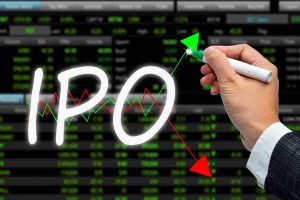



 Types of Brokers
Types of Brokers



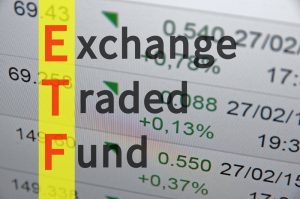



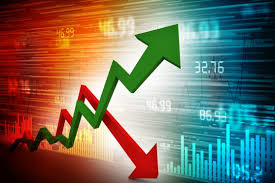



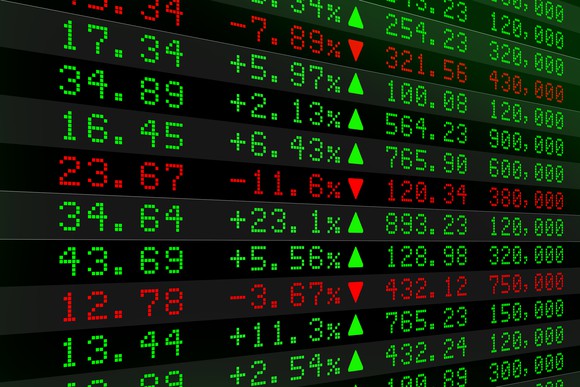




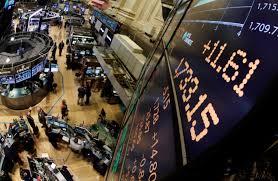 .
.

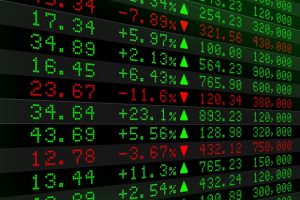 Investors can react quickly to breaking news stories by having the ability to trade around the clock. They can trade immediately on new information during the after-hours trading sessions rather than waiting to take a position during the traditional trading day. Trading after hours can also give investors the opportunity to find some appealing prices. In order to take full advantage of the opportunities to trade during after hours sessions, investors may apply some specific strategies.
Investors can react quickly to breaking news stories by having the ability to trade around the clock. They can trade immediately on new information during the after-hours trading sessions rather than waiting to take a position during the traditional trading day. Trading after hours can also give investors the opportunity to find some appealing prices. In order to take full advantage of the opportunities to trade during after hours sessions, investors may apply some specific strategies.

